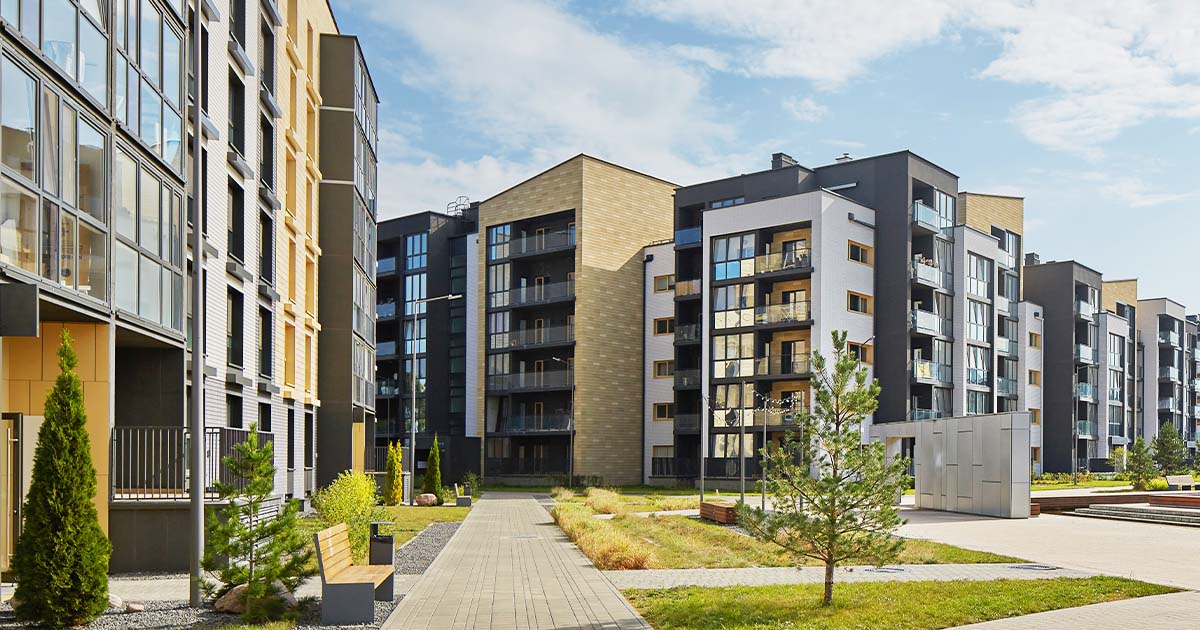New year, new opportunities for Build to Rent – Helen Streeton writes for BTR News

Build to Rent was once considered a niche segment of the UK’s housing market. It has now gained significant attention from investors over the past year.
Despite the UK’s continued macro-economic headwinds and uncertainty in terms of new legislation, the Build to Rent market is poised to play an increasingly important role in the UK’s housing delivery.
Investor interest ticking upwards
Overall, investor appetite for residential assets is increasing across all living sectors. Interest in Build to Rent is now at a level comparable to that seen in other high-demand sectors such as data centres, logistics, and purpose-built student accommodation (PBSA).
Investors are increasingly recognising the potential of Build to Rent as a sustainable long-term investment, combined with growing demand for rental properties, since fewer people can afford home ownership due to high property prices and restrictive mortgage access.
With more individuals and families having no option but long-term rental solutions, Build to Rent has positioned itself as a solution to the chronic shortage of homes in the UK. The sector offers stability and resilience amid broader market volatility, making it an attractive proposition for institutional investors looking for reliable returns.
Tax changes have already led to a reduction in the number of buy-to-let properties – the abolition of mortgage interest rate relief being one measure that has impacted supply.
Landlords also face higher costs due to new legislation such as the Renters’ Rights Bill, once it becomes law. These changes are expected to continue shrinking the private rented sector (PRS) market, further driving demand for Build to Rent homes.
Obstacles to look out for
Looking ahead in 2025, considerable funds are available for deployment in Build to Rent, but there is a challenge around achieving satisfactory returns – factors such as high construction costs, interest rates, inflationary pressures and the broader economic climate all impact here.
A key concern is the potential impact of government policies and other demand-side stimulants aimed at revitalising the Build to Sell market. These initiatives could inadvertently shift resources away from Build to Rent, leading to a reduction in supply.
Developers may opt to focus on traditional sales, given the stronger demand from the home-buying market, ultimately reducing the volume of Build to Rent stock available.
Building Safety Act requirements around higher-risk buildings together with a sticky planning system remain obstacles to getting buildings out of the ground. These factors are resulting in delayed or stalled projects, putting pressure on an already constrained housing supply.
Build, build, build: the role of Build to Rent
One solution which the government has recently proposed to the UK’s housing crisis is its revised National Planning Policy Framework (NPPF), which is far less prescriptive than previous versions, focusing more on addressing local needs for both ownership and rental housing.
Local authorities will be increasingly willing to consider Build to Rent as a solution to meet housing demand, particularly in areas where high levels of rental demand exist. However, developers will need to demonstrate through the planning process how their Build to Rent schemes will address specific local needs. This approach allows for greater flexibility, offering developers the opportunity to tailor projects to meet the diverse requirements of local communities.
Whilst changes to the NPPF aim to unclog the planning system, Labour’s proposed housing target of 300,000 homes per year until 2029 is unachievable within the current economic climate and regulatory framework.
However, Build to Rent is well-positioned to contribute significantly due to its investment structure and offering, which isn’t contingent on sale absorption rates. By providing high-quality rental homes, Build to Rent can help to alleviate pressure on the broader housing market.
Another piece of legislation working its way through Parliament is the Renters’ Rights Bill, which includes provisions to abolish Section 21 no-fault evictions and introduce rent review processes.
While these changes primarily affect the PRS sector, they highlight a broader trend towards tenant protection. Investors in the Build to Rent sector will need to adapt to these changes, ensuring that their properties remain compliant with evolving tenant rights regulations.
In conclusion, the Build to Rent sector is well positioned to play a pivotal role in shaping the UK’s housing landscape in 2025. The sector has the potential to meet the growing demand for rental homes, contribute to ambitious housing targets, and provide stable investment returns.
As new challenges and opportunities emerge, stakeholders in the Build to Rent sector must remain agile and proactive, ensuring that this vital sector continues to thrive amidst the ever-changing housing landscape. Build to Rent is a necessity if Labour wants to meet the UK’s housing needs.
This article was published on BTR News on 10 January 2025, and can be accessed here.





